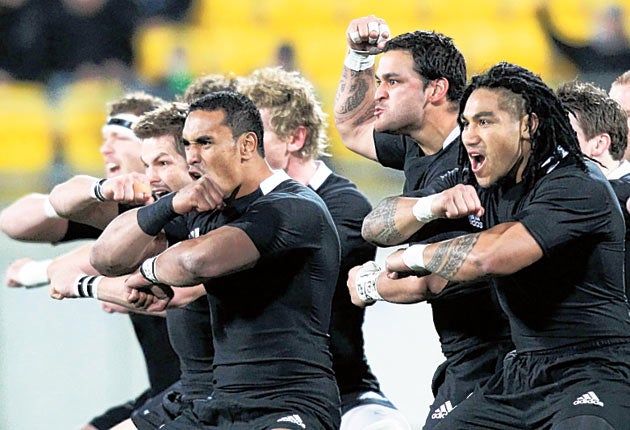The dark side of Maori life rugby fans will never see

Your support helps us to tell the story
From reproductive rights to climate change to Big Tech, The Independent is on the ground when the story is developing. Whether it's investigating the financials of Elon Musk's pro-Trump PAC or producing our latest documentary, 'The A Word', which shines a light on the American women fighting for reproductive rights, we know how important it is to parse out the facts from the messaging.
At such a critical moment in US history, we need reporters on the ground. Your donation allows us to keep sending journalists to speak to both sides of the story.
The Independent is trusted by Americans across the entire political spectrum. And unlike many other quality news outlets, we choose not to lock Americans out of our reporting and analysis with paywalls. We believe quality journalism should be available to everyone, paid for by those who can afford it.
Your support makes all the difference.It is late afternoon in Wairoa, a country town in New Zealand's picturesque Hawkes Bay region and in the park, several dozen teenagers are performing press-ups, warming up for their after-school rugby training.
The peaceful scene is in sharp contrast to three days earlier, when a local rugby league match ended with members of a Maori gang, the Mongrel Mob, producing a sawn-off shotgun and firing it into the air.
No one was hurt, but the events may seem out of place in a town of 4,000 people and a country whose marketing slogan is "100% pure". New Zealand, though, has an entrenched gang culture and rarely a week passes without trouble erupting. Wairoa – 90 minutes north of Napier, a city popular with tourists and a rugby World Cup venue – is the latest flashpoint.
This is a side of New Zealand that fans of the World Cup, which begins on Friday, are unlikely to see. But while it is mostly confined to the shadows, it reflects the uglier aspects of a nation widely perceived as clean, green and safe.
Gangs thrive in areas with big Maori and Pacific Islander populations and high levels of crime, poverty and unemployment. Maori, in particular, are at the bottom of the socio-economic heap in New Zealand. They are also largely responsible for its shocking rates of domestic violence and child abuse – the country's "dark secrets", as a former Governor-General, Dame Silvia Cartwright, called them.
Gangs are active across New Zealand, even in small rural communities. Lately, though, the gangs have been trying to clean up their image, with some leaders renouncing violence and preaching mainstream values. Rex Timu, president of the original Mongrel Mob chapter in Hastings, near Napier, instructs would-be recruits to "go away and get an education". Mr Timu, who has the Mongrel emblem – a bulldog with a German helmet – tattooed on his bulky left forearm, also warns them: "Don't join us if you want to do an armed robbery or kill someone. That's not our way anymore."
Join our commenting forum
Join thought-provoking conversations, follow other Independent readers and see their replies
Comments